Description
You are purchasing the item pictured, framed. Priority mail, tracking and $50 insurance is included with purchase. Item will be bagged to protect from dust, packed in packing peanuts and boxed. Just open box and hang it on the wall…makes a perfect gift!
The Flash (Bartholomew Henry “Barry” Allen) is a fictional character, a superhero in the DC Comics universe. He is the second character known as the Flash. The character first appeared in Showcase #4 (Oct. 1956), created by writers Robert Kanigher and John Broome and penciler Carmine Infantino. His name combines talk show hosts Barry Gray and Steve Allen. “Flash of Two Worlds!” is a landmark comic book story that was published in The Flash #123 (Sept. 1961). It introduces Earth-Two, and more generally the concept of the multiverse, to DC Comics. The story was written by Gardner Fox under the editorial guidance of Julius Schwartz (whose subsequent autobiography was titled Man of Two Worlds), and illustrated by Carmine Infantino. At a charity event organized by Iris West, the Flash is using his super-speed to perform magic tricks to entertain the children there as the magician has not come. During a rope climbing trick, the Flash begins vibrating his molecules to appear invisible when he suddenly disappears from the stage. He finds himself outside in a strange city, which he discovers to be Keystone City, the home of the Golden Age Flash. Keystone City is located on Earth-Two (not named as such in this story), an Earth in a parallel universe. On Barry Allen’s world, the Golden Age Flash is thought to be a fictional comic book character. Barry looks up Jay Garrick in the phone book, and introduces himself to the older speedster. On this Earth Jay had retired years earlier, the year his comic book series was canceled on Earth-One, and married his longtime girlfriend Joan Williams. Barry claims Gardener Fox’s thoughts must have been tuned in to the events of Earth-Two. The success of “Flash of Two Worlds” encouraged DC to revive many of its Golden Age characters. Eventually, crossovers between the two Earths would become an annual feature in the Justice League of America comics, beginning with issue #21, “Crisis on Earth-One!” (August 1963), and culminating in the 12-issue mini-series, Crisis on Infinite Earths. The cover itself has become an iconic image, and has been referenced in the covers to Flash v.1 #147 (Sep. 1964), Dark Horse Presents #67 (November 1992), Flash v.2 #123 (Mar. 1997), Impulse #70 (Mar. 2001), and Flash Rebirth #5 (Jan. 2010), among others. In 2004, a near-mint copy of The Flash #123 sold in a Heritage auction for $83,000. In Final Crisis #2 (August 2008), the location of this story is revisted by Wally West (the Third Flash) and Jay Garrick (the First Flash), but by the time of Final Crisis the Central City community center has become an abandoned strip joint. Later in the same issue it becomes the location for the return of Barry Allen (the second Flash), for the first time since his apparent death in Crisis on Infinite Earths #8 (November 1985). Carmine Michael Infantino (May 24, 1925 – April 4, 2013) was an American comic book artist and editor who was a major force in the Silver Age of Comic Books. He was inducted into comics’ Will Eisner Award Hall of Fame in 2000. Infantino’s first published work for DC was “The Black Canary”, a six-page Johnny Thunder story in Flash Comics #86 (Aug. 1947) that introduced the superheroine the Black Canary. Infantino’s long association with the Flash mythos began with “The Secret City” a story in All-Flash #31 (Oct.-Nov. 1947). He additionally became a regular artist of the Golden Age Green Lantern and the Justice Society of America. During the 1950s, Infantino freelanced for Joe Simon and Jack Kirby’s company, Prize Comics, drawing the series Charlie Chan. Back at DC, during a lull in the popularity of superheroes, Infantino drew Westerns, mysteries, science fiction comics. In 1956, DC editor Julius Schwartz assigned writer Robert Kanigher and artist Infantino to the company’s first attempt at reviving superheroes: an updated version of the Flash that would appear in issue #4 (Oct. 1956) of the try-out series Showcase. Infantino designed the now-classic red uniform with yellow detail (reminiscent of the original Fawcett Captain Marvel), striving to keep the costume as streamlined as possible, and he drew on his design abilities to create a new visual language to depict the Flash’s speed, making the figure a red and yellow blur. The eventual success of the new, science-fiction-oriented Flash heralded the wholesale return of superheroes, and the beginning of what fans and historians call the Silver Age of comics. Infantino drew “Flash of Two Worlds,” a landmark story published in The Flash #123 (Sept. 1961) that introduced Earth-Two, and more generally the concept of the multiverse, to DC Comics.
>PAN>Frame is shrinkwrapped until time of purchase. Ships boxed with packing peanuts.
THE PERFECT GIFT!
Related products
-

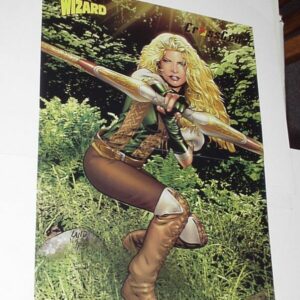
CrossGen Poster #18 Arwyn Greg Land Sojourn Bow of Ayden
$29.99 Add to cart -
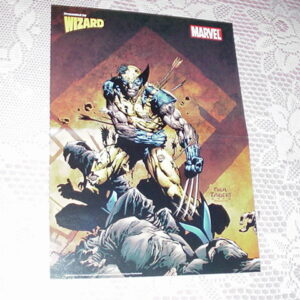
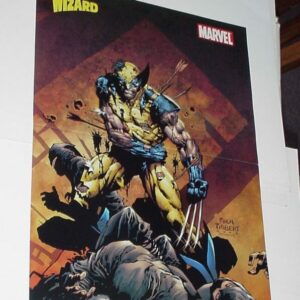
Wolverine Poster #16 vs The Hand The End by David Finch Ninjas
$39.99 Add to cart -
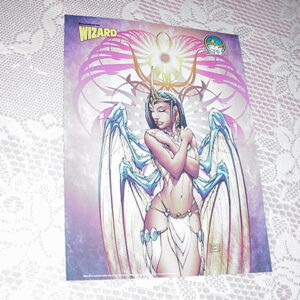

Soulfire Poster # 1 Grace by Michael Turner Fathom
$39.99 Add to cart -
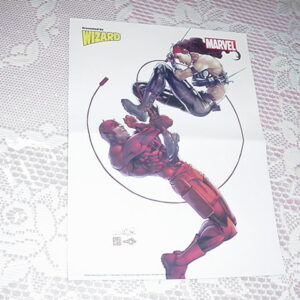
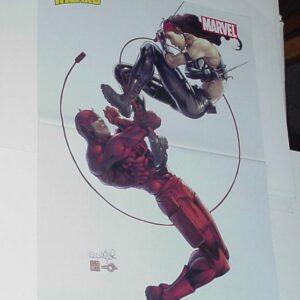
Daredevil vs Elektra Poster Ultimate Salvador Larroca
$29.99 Add to cart




